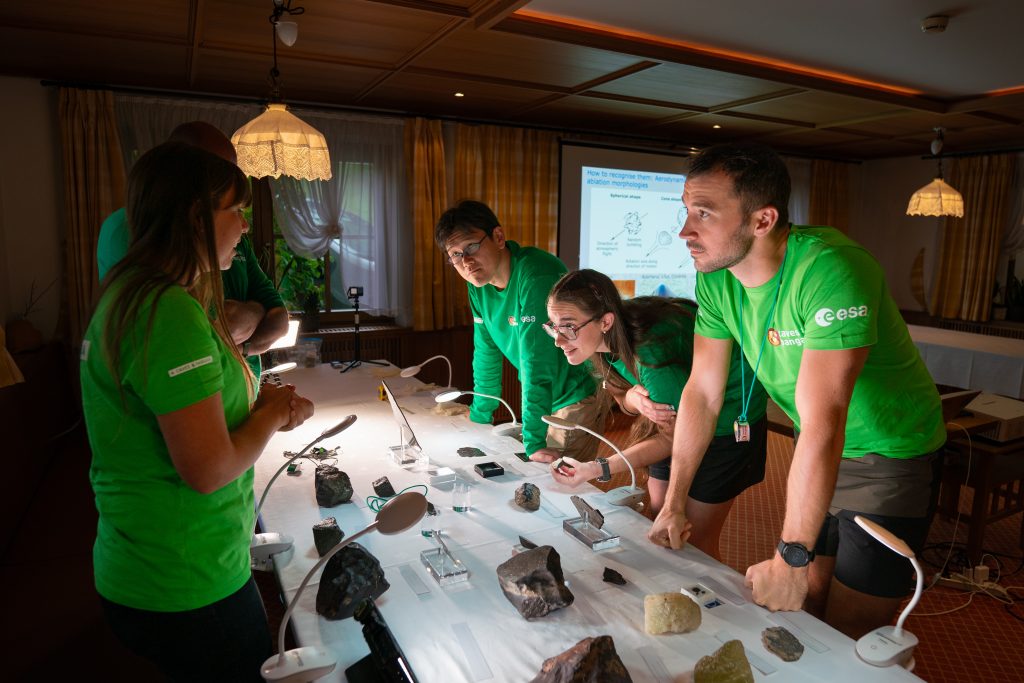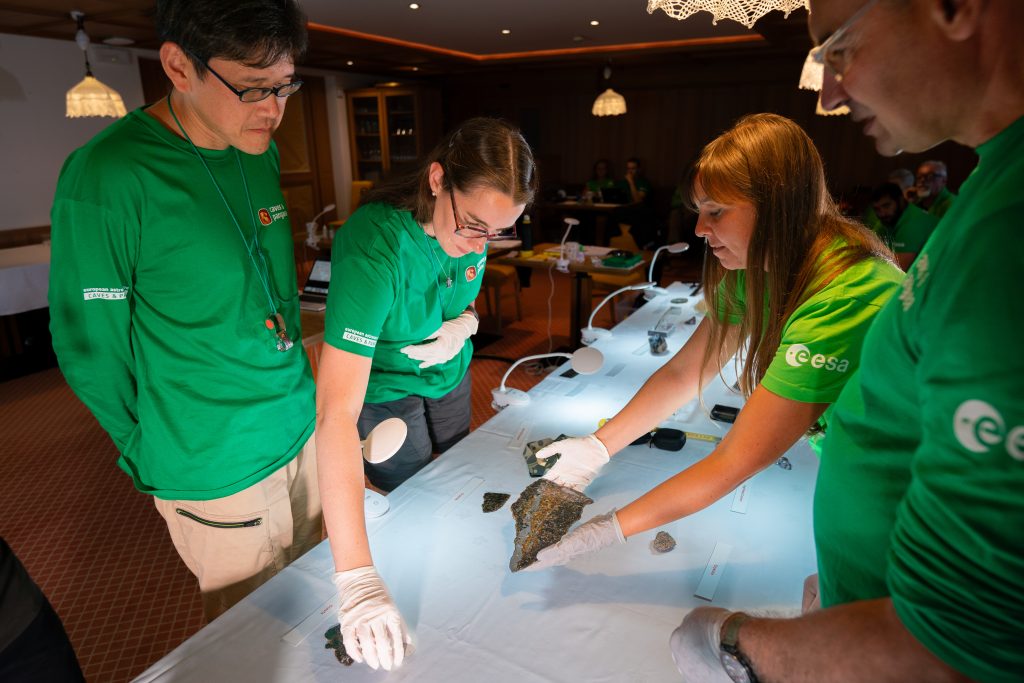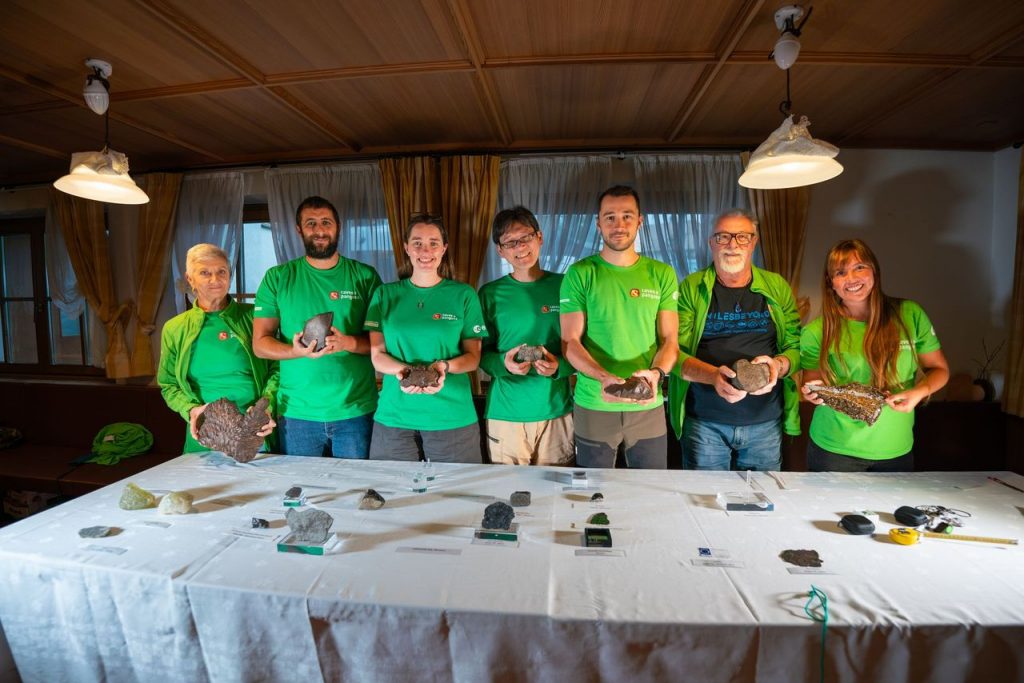Remnants of the ancient Solar System, these objects contain records of its earliest history.
The Moon’s barren surface is an excellent place to preserve and find meteorites. How to recognise them, interpret their origin and understand why this matters is one of the challenges of ESA’s PANGAEA geology course for astronauts.
Space messengers
Meteorites are space rocks that have survived crashing into a planet or moon’s surface. They are crucial for understanding the geology and structure of celestial bodies in our Solar System.
“Meteorites are messengers from space that can give us important information about our origins and the evolution of our cosmic neighbourhood,” explains Anna Barbaro, a researcher at the Goethe University in Frankfurt, Germany, specialised in studying rocks from other worlds.

Training astronauts to identify meteorites and appreciate their scientific value is a first for Anna. “It is fascinating to discuss extraterrestrial samples with people that might collect rocks from the Moon one day. I will remember this experience for a very long time,” she admits.
Astronauts meet meteorites
Each lesson combines theory and hands-on exercises, either in the field or in the classroom.
“Are we allowed to touch them?” asks ESA astronaut Rosemary Coogan eagerly. For many astronauts, whether rookies or veterans, PANGAEA becomes the first opportunity to put their hands on a piece of the Moon, Mars or an asteroid.

The trainees interact with an extensive collection of meteorites from the Museum of Nature and Humankind of Padova and the collections of ‘meteorite hunters’ Giorgio and Lina Tomelleri. They shared their expertise on how and where to find them, and their remarkable story of accidently discovering a Martian meteorite weighing nearly two kilos in the Libyan desert.
The astronauts need to distinguish the different types of meteorite to understand what they are made of and where they come from. “They kept asking questions to discover as much as they could about the history of the samples,” says Anna.
“Astronauts trained in geology can compare rocks in front of them and discern their scientific value. If one of our trainees were to spot a sample beautifully out of context on the Moon, they could be looking at a meteorite coming from Earth,” explains PANGAEA instructor and professor of planetary geology Matteo Massironi.
“Human curiosity and knowledge will make a difference when exploring the Moon,” he adds.

Meteorite Scene Investigation
Gloves on and magnifier at hand, the astronauts approach the samples as if they were at a crime scene looking for clues.
Matteo and Anna guide them to look at the shapes of the meteorites and the scars covering their surfaces. These features can provide information on their composition and journey to the surface of Earth.

Trainees also examine the meteorite’s mineralogical and chemical composition. Over 300 minerals have been identified in meteorites. Spectral data can help establish their origin and if they have been altered by weather and other elements at the impact site. Geochemical research could help establish the age of the sample.
This introduction to meteorites served as a transition into more focused sessions on impact craters. The crew moved this week to the Ries crater, one of the best-preserved impact craters on Earth.
About 15 million years ago, a giant asteroid of one kilometre in diameter hit Earth at 20 km per second releasing one trillion times the energy of the Hiroshima atomic bomb. The result is still visible in west Bavaria today: a 25km-crater with a depth of roughly 200 metres.
PANGAEA’s meteorite lesson had contributions from:
- Matteo Massironi, Professor of structural and planetary geology, University of Padova, Italy.
- Anna Barbaro, postdoctoral Humboldt fellow, Schwiete Cosmochemistry Laboratory, Department of Geoscience at Goethe University, Germany.
- Simone Molinari, curator of the mineralogical section “Alessandro Guastoni” of the Museum of Nature and Humankind, University of Padova, Italy.
- Giorgio and Lina Tomelleri, meteorite experts, Italy.


Discussion: one comment
Just wanted to show you my collection of meteorite if u can ttyl